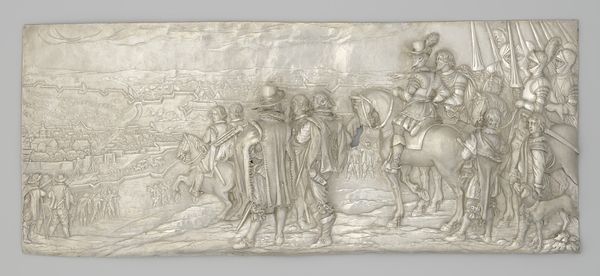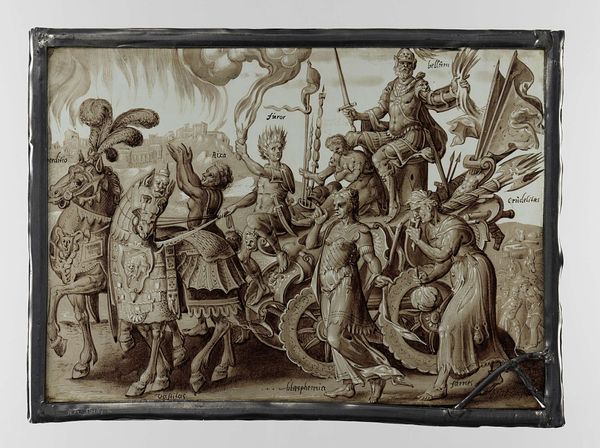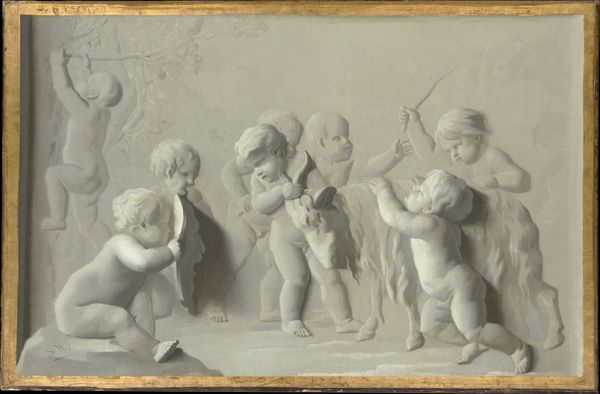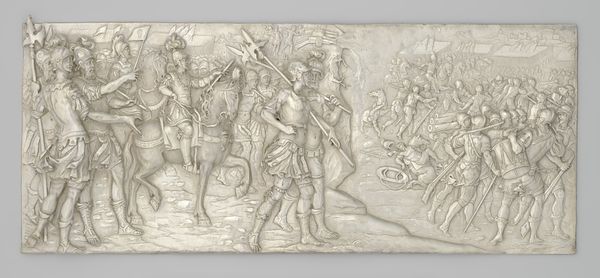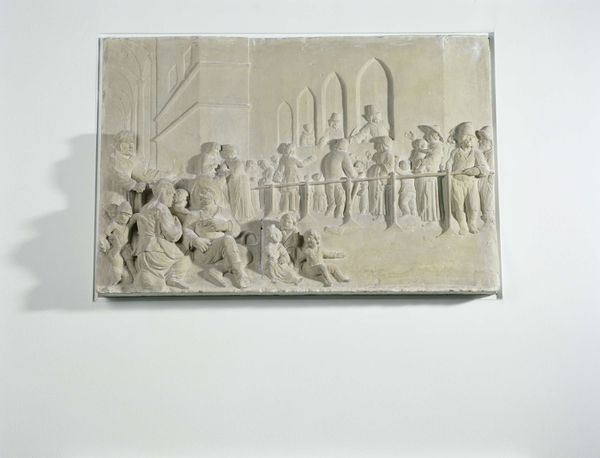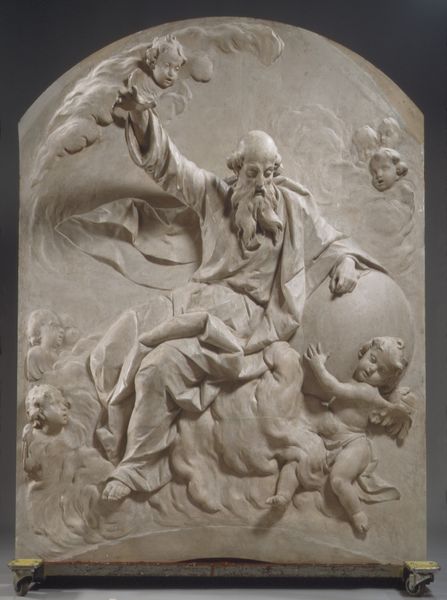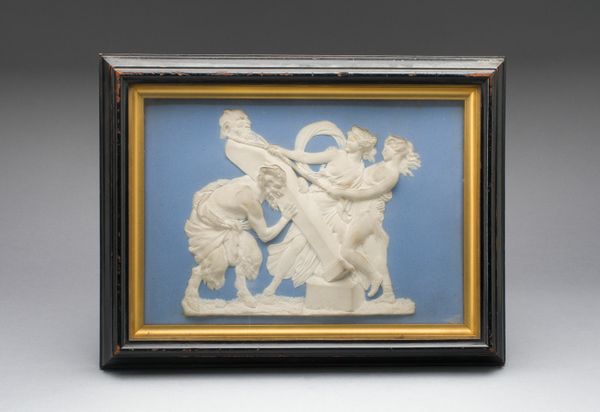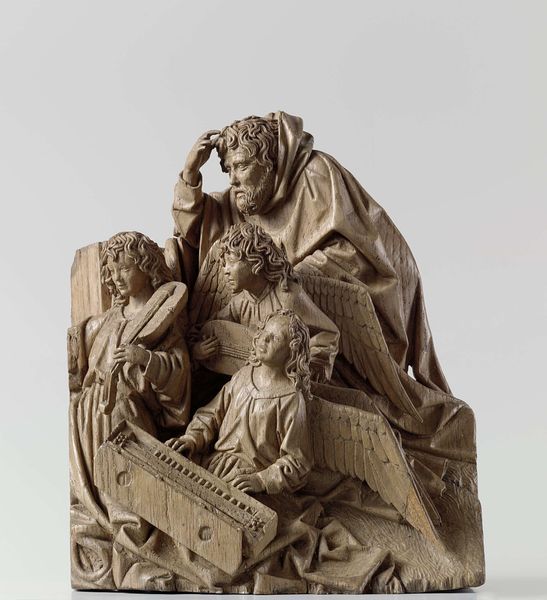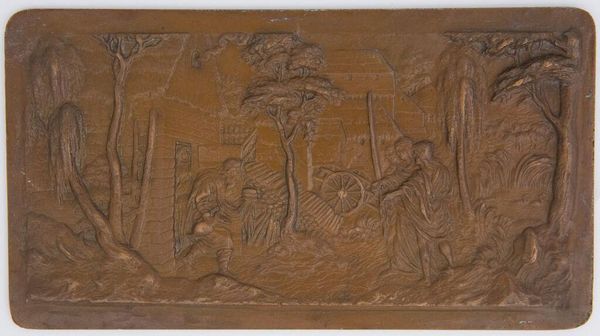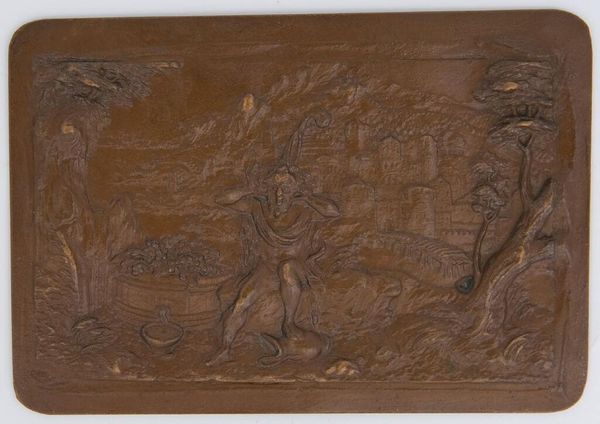
Children and Satyr Children Sporting with a Goat 1776 - 1786
0:00
0:00
Dimensions: 10 x 30 1/2 in. (25.4 x 77.5 cm.)
Copyright: Public Domain
Curator: Just look at this frieze. It feels incredibly buoyant and almost... playful. It depicts children frolicking around a goat, and it's this muted beige tone. The artist clearly prioritized lightness. Editor: The playful quality resonates so clearly with its Rococo roots. This is "Children and Satyr Children Sporting with a Goat," created by Clodion sometime between 1776 and 1786. A period very defined by its decadence! Curator: Right, and considering Clodion’s favored medium—terracotta—the material choice itself contributes significantly to the artwork’s overall lightness. Think of the processes involved: the molding, firing, and careful finishing... These tactile methods speak to a direct connection with the earth, strangely grounding even fantastical scenes in everyday labor. Editor: Absolutely. We need to contextualize that labor. The piece’s escapism isn’t some innocent retreat. The opulent setting and abundance of putti speak volumes about the elite patronage driving artistic creation at that time. Isn't it fascinating how ideas of innocence and play are staged with such awareness, right before a time of revolution in France? Curator: I find it also compelling that terracotta, despite being more accessible than marble, was often employed for preliminary models. Its malleability offered artisans great freedom of expression as you say. Do you think of it more of a political model? Editor: I would definitely argue this composition operates within broader sociopolitical structures that legitimized its aristocratic vision. A satire about youth, maybe. While on the surface it’s playful and innocuous, the fact it's celebrating unadulterated frivolity when much of the country suffers hints at a more pointed allegory, a veiled critique. Curator: Or is it simply a desire for simpler times? One last bucolic expression before the world changes completely. Regardless, viewing it today, what does this sculpture say about the material culture and artifice of the late 18th century? What sort of legacy do the means and setting evoke? Editor: Precisely. I agree. I can’t help but see those frolicking children through a 21st-century lens.
Comments
No comments
Be the first to comment and join the conversation on the ultimate creative platform.
